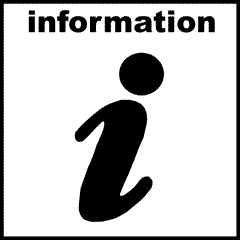click to Home
SnoZone
Abilities
Lesson Pricing
Mobile Service
SnoZone contact
Endless Slope
Ski & Snowboard
Surfing
Xtreme Chimp
Article GE 5
Helmets
by
Sam Morishima
Here are a few basic questions and answers regarding information on wearing helmets
.What is the risk for head injuries?
A study in Canada has found that of all the injuries suffered by skiers and snowboarders head injuries comprise 3 -15 per cent. Though it may comprise the smaller amount of the injuries as compared to broken bones, torn ligaments, bruises and sprains the scary thing is that traumatic brain injuries can account for 50-88 per cent of the fatalities at ski resorts and 67 per cent of skier deaths in children. Concussions represent 9.6 per cent of injuries in skiers, 14.7 per cent of injuries in snowboarders and 5.7 per cent of injuries in snowbladers. Of the head injuries concussions accounts for 83 per cent.
What type of ski or snowboarders are more susceptible to injuries?
It appears that novice skiers and snowboarders are most susceptible to overall injuries including head injuries. Between skiers and snowboarders it is the novice snowboarders in particular that are most likely to suffer severe head injuries.
Considering age; children and adolescents are experiencing more head and neck injuries than adults. This maybe due to children having less developed muscles and bones resulting in greater number of falls as well as becoming tired more quickly from physical activity. I feel that most adults are a lot more cautious than children in their skiing and snowboarding. Also I believe Children are many times outfitted with ill-fitting ski equipment with many parents trying to guess their continued growth during the season.
So how effective are Helmets
for preventing head injuries?
Several studies have demonstrated that ski and snow board helmets are effective at preventing head injuries. It is estimated that for every 10 people who wear a helmet, up to five may avoid head injuries. Studies also show that even at a speed of 19km/h, a ski helmet can minimize brain damage. Helmets may prove to offer even greater protection, however, many individuals wear them incorrectly.
By wearing a helmet will skiers and snowboarders take more risks?
A study back in 2007 stated that skiers and snowboarders who wore helmets actually traveled at slower speeds and challenged themselves less than non-helmet wearers. I believe this is still true. Having a helmet makes us more aware that injury is possible. But, this is for most of us and there are others with or without helmets who will try and push the envelope of their abilities.
How should a helmet fit?
As a general rule for fitting a helmet for either adults or children ski and snowboard helmets should rest two fingers width above the eyebrow with the helmet comfortably snug and with only one finger width under the chinstrap. Make sure the helmet pads touch the cheeks and the forehead, with the helmet back not touching the nape of the neck. If goggles, are attached there should be little or no gap between the top of the goggles and the helmet. Always follow the helmet's fitting instructions.
When should a ski or snowboard
helmet be replaced?
If a helmet has been dropped or the wearer has been in a fall or
collision while wearing the helmet, a new one should be purchased, even
if it appears undamaged. Also, if it is over 5 years old it should be
replaced as the plastic and other materials become brittle and loses its
cushion, absorption and protective capability. Also as technology
improves older helmets may not meet current safety
standards, or you may have missing or broken parts.
Should I buy or use a second hand helmet?
It is nearly impossible and difficult to tell if a used helmet has taken a fall so it is best not to trust a second-hand helmet and we do not recommend using one. Also, if the used helmet is old (over 5 years old) it may have lost its protective ability due to aging or is not up to latest safety standards and just may have some missing or broken parts.
The California Legislature recently passed a bill requiring the use of helmets by minors, but the law was shelved when a stipulation that a separate bill targeting ski resort signage and safety also be passed was not signed by Governor Arnold Schwarzenegger.
It's still a very good idea for children to wear helmets, however.
If your child is resistant to the idea, make it a fun experience for them by purchasing a helmet cover. Many fun and stylish covers for both adults and children can be found at www.crazeeheads.com.
